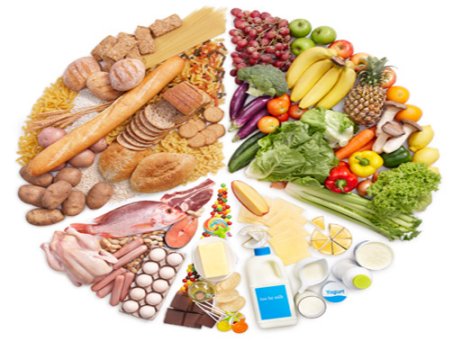
Introduction
Is it true that Yah'shua (Jesus) died so that we could eat anything we want and not follow the biblical Kashrut or dietary laws? This is what most of the churches teach. But is it true? Did Yahweh really change His mind at the Cross? Did 'unclean' suddenly become 'clean'? These are some of the questions that the materials in this sub-site will seek to answer.
Today we use the word 'food' to include all the vegetable and animal products used by man to maintain the physical life of his body. However, much of what we call 'food' is regarded by Yahweh as poison and its consumption expressly forbidden - out of ahavah (love) for our health and that of our children. Not only do we want to be clear as to what is, and is not, proper food to humans but we need also to be able to employ a prophetic eye in making judgments as to what is, or not, fit for consumption that at first glance may seem not be covered by Yahweh's dietary torot (laws).
Referencces to 'food' and related themes appear in every book of the Bible, starting with Genesis 1 and ending in Revelation 22. This will give you some idea just how important diet is viewed by the Creator. Indeed, some of the best-known stories are those dealing with food and foot-getting. Tanakh (Old Testament) examples include Eve's temptation of Adam, Joseph saving the people of Egypt and his own family from famine, the children of Israel eating manna in the desert, Ruth gleaning wheat in Boaz's fields, David the brave little shepherd boy, Elisha who kept the widow's oil flowing and the young Hebrew boys who would not eat the king's unkosher ('unclean') food.
New Testament examples are numerous too. They include stories of Yah'shua (Jesus) turning water into wine, helping the talmidim (disciples) to catch fish, feeding the 5,000 with five loaves and two small fishes, and His Last Supper. Yah'shua (Jesus) also told parables which often dealt with food-related themes, like the parable of the sower, the weeds (tares), the mustard seed and the yeast, the lost sheep, the workers in the vineyard, and the wedding banquet. Many other examples may be found in Acts, the letters of Paul, Peter and John.
Why is food so important in the Bible? In antiquity most people were food-producers - farmers, shepherds and fishermen. The daily lives of almost every man, woman and child were caught up in such activities as caring for the barnyard and pasture animals, clearing and ploughing, planting and tending crops, harvesting and processing crops, transporting and sorting foodstuffs, preparing and consuming food, and concern about having enough left over to survive until the next harvest. In many parts of the world in the 21st century, this is still true and will become more true elsewhere where there is currently prosperity in the current and coming days of judgment.
Food is also a central theme throughout the Bible because of the web of interactions between people and the land, between people as social actors and between people and the Divine. In other words, how food was produced, distributed, prepared and eaten had consequences which went far beyond the supply of nourishment to people's bodies. Food served in Bible times, as today, as a powerful instrument for communicating social and spiritual meaning - for expressing hospitality (Abraham and his angelic visitors), commemorating evidences of Divine intervention in human affairs (the annual festivals) and selling compacts between peoples and individuals (the Last Supper).
A. THE TANAKH (OLD TESTAMENT)
a. Pre-Fall and Pre-Flood
From the very beginning (Gen.1:29-30; 2:16) all seed-bearing plants (mainly grains and vegetables) and fruit-bearing trees served as food for man, and natural greenstuffs as food for animals. The Fall brought with it the necessity for hard toil in food gathering and production (Gen.3:18,23; 4:2-3). Food in the ark was evidently representative of that in common use at the time, but no details of it are given:
"You are to take every kind of food that is to be eaten and store it away as food for you and for them (the animals on the ark)" (Gen.6:21, NIV).
However, not all could be eaten, and even though this was a long time before Yahweh's dietary torot (laws) were written down by Moses, it is very clear that both before and immediately after the Flood a distinction was made between what kind of animal might be eaten and what might not, even though they are not listed for us:
"Take with you seven of every kind of clean animal, a male and its mate, and two of every kind of unclean animal, a male and its mate..." (Gen.7:2, NIV; also v.8)
The ratio of edible to non-edible animals on the ark was 7:1, for obvious reasons. They are not listed for us in Moses' account in the Pentateuch for the simple reason Moses restored the Kashrut law in his day and gave us the necessary details of what is food and what is not (Lev.11).
After the flood, Yahweh promised that seedtime and harvest should not cease while the earth endured, and all clean (kosher) living things (besides vegetation) might be used, but not their blood (Gen.8:22-9:4), a law, incidentally, re-affirmed in the New Covenant of Messiah for new Gentile believers (Ac.15:20,29; 21:25) but universally flouted by nearly all Christians today. Thus those believers who eat meat without the blood being first drained from it are walking in disobedience and rebellion against Yahweh on two accounts - the revelation restored through Moses and the revelation reaffirned by the apostles.
At the time of Noah's resettlement of the earth after the Flood, grape-growing (and, unfortunately, in consequence, drunkeness) first makes its appearance (Gen.9:20-21).
b. The Patriarchal Age
In Egypt, Palestine and Mesopotamia in the early second millennium BC, grain and various breads were a staple diet along with milk, butter, cheeses, water, wine and beer. Doubtless the semi-nomadic Patriarchs lived mainly on the milk-products of their cattle and flocks, but also had bread (see the supply given to Hagar in Gen.11:14) and sometimes cultivated grain seasonally as did Isaac (Gen.26:12) and presumably Jacob (cp. Gen.37:7), since he needed to buy Egyptian grain in time of famine (Gen.42:2.25ff.; 43:2; 44:1-2).

Lentil soup (a red soup) was probably a common dish in the days when Esau traded his birthright for a meal of it (Gen.25:29-34), as it certainly was later on (e.g. 2 Sam.17:28). Honoured guests were treated to the fatted calf accompanied by curds of milk (Gen.18:6-8). With Abraham's action we may compare the references in the northern Canaanite texts from Ugarit which mention slaughter and preparation of "a lamb from the flock" or "the sleekest of...fatlings" (J.B.Prichard, Ancient Near Eastern Texts (ANET): 1950, pp.146,149,151).
Although meat was not an everyday dish, desert-game was popular in patriarchal Syria-Palestine. Isaac liked his tasty meat from the hunt (Gen.27:3-4), just as did the Egyptian Sinuhe in Palestine a little earlier (ANET, p.20). Presents to dignitaries might include nuts and honey as delicacies (Gen.43:11). The tablets from the 18th-century BC palace at Mari indicate that large amounts of honey were provided at banquets for visiting royalty, and during the same period king Ishme-Dagan of Assyria sent pistachio-nuts to his brother ruling at Mari. In Egypt, too, honey was first and foremost the prerogative of royalty and high society, but was also occasionally enjoyed by their inferiors.
Finally, the common meal was a recognised token of amity between the two contracting parties of an agreement, e.g. Isaac and the Philistines in Genesis 26:30, and Jacob and Laban in Genesis 31:54. No details are given of the meal Joseph treated his brothers to in Egypt (Gen.43:31.34).
c. Israel in Egypt

In Egypt, despite their hard life, the captive Israelites had a wide variety of food that they remembered with nostalgia in the wilderness journeyings: fish in plenty, cucumbers, melons, leeks, onions and garlic (Num.11:5). This list corresponds quite closely with known ancient Egyptian foods, not least in the eastern Delta (Goshen area) in the 13th century BC. Thus, in praising the region of Ra'amses, a scribe extols its wealth of foods: onions and leeks, seven kinds of fish in its waters, and various fruits and vegetables (ANET, p.471; also Caminos, Late-Egyptian Miscellanies: 1954, p.74).
d. Food in Israel
i. Vegetable foods. Grain, wine and olive oil were the three staple commodities (Dt.7:13; Neh.5:11; Hos.2:8). The grain was mainly barley, wheat and sometimes spelt, an inferior wheat (see Ex.9:32 {Egypt}; Dt.8:8; Is.28-25 {note order of grains}).

Bread was the all-important commodity of the Ancient East, and the price of grain is an infallible index to economic conditions at any given time. In the Old Babylonian period the grain of corn provided the basic unit for the system of weights, and cereal took the place of money in commerce. Hosea, even in his day, paid part of the price of his wife in grain.
While we possess much information about the price of grain, references to the price of bread are extremely rare. One reference from the Hammurabi period (18th century BC) gives 10 se (about a tentieth of a shekel) as the price of 4 sila bread (B.Meißner, Werenpreise in Babylonien, p.7). In 2 Kings 7:1 the price quoted for cereal seems considerably lower than in the preceding famine. In Revelation 6:6 the prices describe graphically the grim conditions of famine.
Barley bread was probably the most widely used. The fact that barley was also fed to horses (1 Ki.4:28) does not necessarily imply that it was considered inferior, any more than oats is in our day. Wheat bread was more highly prized and was probably fairly common. Spelt was also used, but rye does not seem to have been cultivated. On occasions various cereals may have been mixed together and, as Ezekiel 4:9 indicates, even lentil and bean meal were added.
The general term for grain was dágán. After threshing and winnowing, the grain was either crushed in a mortar with a pestle or was ground in a mill by rubbing the upper syone to and fro on the nether millstone. This form of mill, and not the rotating type (quern), seems to have been the one in common use. Different kinds of flour were in use. The term for flour or meal in general was qemach, and when necessary this was qualified by the addition of the name of the cereal (Num.5:15). What was probably a finer quality was called sóleth (cp. 1 Ki.4:22), but some scholars take this word to mean 'groats' (the hulled kernels of various cereal grains). This was the meal used in the offerings (Ex.24:40; Lev.2:6, etc.).
The word qáli', often translated 'parched corn', was probably roasted grains, which were eaten without further preparation.
The flour, mixed with water and seasoned with salt, was kneaded in a special tough. To this, leaven in the form of a small quantity of old fermented dough (chametz) was added until the whole was leavened. Unleavaned bread (matzah) was also baked. Leaven was not used in the offerings made by fire (Lev.2:11, etc.) and its use was forbidden during Passover week, during Chag haMatzah, the Feast of Unleavened Bread. The baking was done either over a fire on heated stones or on a griddle (a broad flat heated surface), or in an oven. Leavened bread was usually in the form of thin cakes. The form 'ugŕ was probably the griddle cake, since it required turning (Hos.7:8).
When bread was kept too long it became dry and crumbly (Josh.9:5,12). In Gilgamesh (XI, 225-229), there is an interesting reference to the deterioration of bread.
That a commodity of such vital importance should leave its mark on language and symbolism is not surprising. From earliest times the word 'bread' was used of food in general (Gen.3:19; Prov.6:8 where the Hebrew is lechem or 'bread'). Since it was the staple article of diet, it was called 'staff' (that which sustains or supports) of bread (Lev.26:26), which is probably the origin of our phrase 'staff of life'. Those who were responsible for bread were important officials, as in Egypt (Gen.40:1), and in Assyria a chief baker is honoured with an eponymy. Bread was early used in sacred meals (Gen.14:18), and loaves were included in certain offerings (Lev.21:6, etc.). Above all, it had a special place in the Sanctuary as the shewbread, literally 'the bread of the presence'. The manna was later referred to as 'heavenly bread' (See Ps.105:40) so understandably bread became the most appropriate word picture for Yah'shua the Messiah (Jesus Christ) Himself, as the lechem chayim or 'bread of life' (Jn.6:33,35). He chose the bread of the Pesach (Passover) to be the symbolic memorial of His broken body.
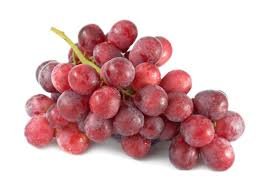
The vine was the second great provider - not only of fresh grapes as fruit (Num.6:3; Dt.23:24), but also dried grapes as raisins (1 Sam.25:18; 30:12) but also of 'asis or sweet (unfermented) grape juice known as 'sweet wine' and 'new wine' (Is.49:26; Amos 9:13; Joel 1:5; 3:18), of half-fermented must (Judg.9:13; Hos.4:11; Prov.3:10, etc.), and of yayin or fully fermented wine. These red juices of the grape were often called 'the blood of the grape' (Gen.49:11; Dt.32:14). Wine in its various forms was the general drink in Palestine. Various wines in ancient Egypt, Palestine (e.g. that of Helbon in Ezek.27:18 and Assyrian texts) and Asia Minor were celebrated in antiquity. Vinegar (wine gone acid), diluted with water, helped refresh fieldworkers (Ruth 2:14).
Besides being a general word for fermented drinks, sékár or 'strong drink' appears to have been applied specifically to beverages brewed from grain (i.e. beer - Herodotus ii.77) or dates (i.193) or perhaps even honey. Beer was the more popular drink in Mesopotamia, but wine in Palestine - both were common in Egypt where date-wine and other drinks are mentioned.
The third basic commodity, olive oil, was used both as food and for cooking-fat. With flour, oil went into breads and cakes, or these could be cooked in oil (Ex.29:2) - its use was universal as seen in the well-known account of the widow of Zarephath (1 Ki.17:12).

In addition to the vegetables already mentioned in the Patriarchal era, pôl or beans were also used (2 Sam.17:28; Ezek.4:9). The word occurs also in Egypt from the 13th century BC. Besides the grapes and olives already discussed, fruits included figs proper, sometimes pressed into fig-cakes (cp. Is.28:21 for a medicinal use; also used medically at Ugarit, for horses), and also sycamore-figs, as in Egypt, that had to be notched to swell to edible size (which was Amos' occupation - Amos 7:14). Pomegranates were eaten and their juice drunk (SS 8:2).
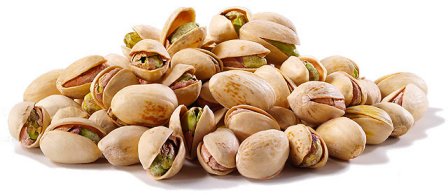
The various nuts available included almonds (Jer.1:11) and pistachio-nuts. The word tappuach probably means 'apple' (Prov.25:11; SS 2:3,5; 7:8; 8:5; Joel 1:12) though this is disputed. Outside of Egypt and Palestine, Babylonian texts indicate a long knowledge of the apple (hashűru) in Mesopotamia, as well as in South East Asia Minor (Purushanda, near modern Topada, Turkey).

ii. Animal Products. These include honey, fats and meat. The honey of wild bees found in rocks, trees, etc. was widely used (Dt.32:13; Judg.14:8; 1 Sam.14:25; 2 Sam.17:29). The Tanakh (Old Testament) writers do not say whether the Hebrews (like the Egyptians) practiced bee-keeping. Honey was a delicacy much enjoyed (Ps.19:10; Prov.24:13). Palestine was indeed a land of 'milk and honey' (Ex.3:8) - in the 15th century BC the Egyptian pharaoh Tuthmosis III brought back hundreds of jars of honey from Syria-Palestine as tribute (7th and 14th campaigns see ANET, pp.19-20).
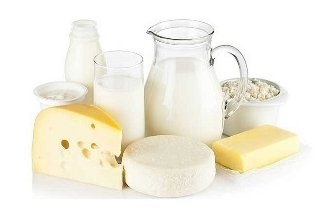
Milk was another staple item of diet (Prov.27:27; Is.7:22; Ezek.24:4), along with its products butter (Prov.30:33) and cheese (Job 10:10; 1 Sam.17:18; 2 Sam.17:29 - as a gift). Milk was often offered to the unexpected visitor or guest, as it was to Sisera in Judges 4:19 and 5:25, and as it had been centuries earlier to the Egyptian figitive Sinuhe (ANET , p.19).
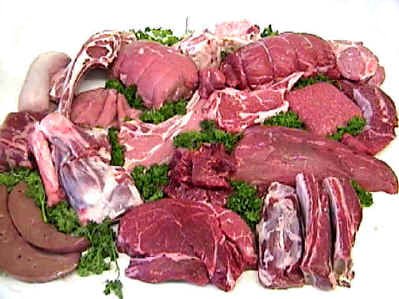
Meat was eaten only occasionally, except perhaps for the rich, who may have had it regularly. As with Abraham, guests were entertained to calf, kid or lamb (cp. Judg.6:19ff; 2 Sam.12:4), and these were acceptable gifts alive or already dressed (1 Sam.16:20; 25:18). The fatted ox in the stall sometimes provided a princely repast (Prov.15:17), just as in Egypt or in Mesopotamia - witness the official, charged with banqueting arrangements for visiting royalty, who reports on a fatted ox so heavy with flesh that "when he stands up, the blood rushes to his feet and he cannot stand...". Eli's renegade sons preferred roast to boiled meat (1 Sam.2:13-15), and meat boiled in a pot of water provided Ezekiel with a text (Ezek.24:3-5). But a kid was not to be boiled in its mother's milk (Ex.23:19), perhaps because this appears to have been associated with Canaanite sacrificial practice, and hence would carry implications to the "food offered to idols" of New Testament times.
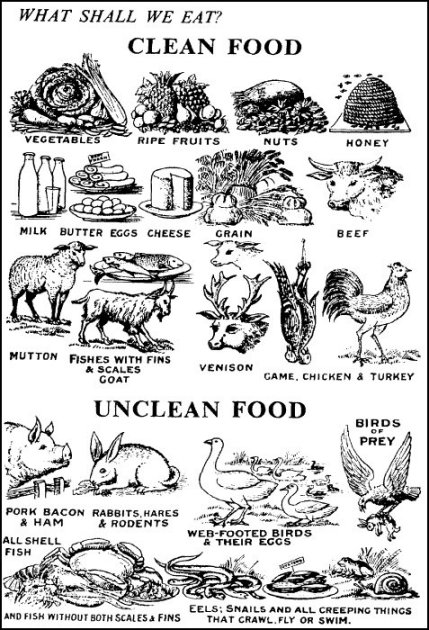
Leviticus 11:1-23,29ff (cp. vv.41ff) and Deuteronomy 14:3-21 record the torah (law) on animals allowed or forbidden as food. In addition to the ox, sheep and goat, it was permissable to eat seven kinds of venison (Dt.14:5), and all other cloven-hoofed animals that chewed the cud. Those animals which failed to fulfil both demands were forbidden as food and listed as 'unclean or 'unkosher', together with more than a score of differnt kinds of birds. With regard to fish, etc., only those with both fins and scales might be eaten. A very few specified insects might be consumed (the locust-family).
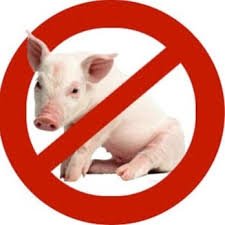
Some of the creatures forbidden were simply unfit for for human consumption. Others (e.g. swine/pork) were unsafe, especially in a hot climate while others might have been too closely identified with surrounding idolatry. Yahweh views the eating of pork with particular disgust (Isa.65:2,4-5).

Fish. The general Hebrew words for water-creatures are dág and dágâ. According to Torah (Lev.11:9-12; Dt.19:9-10), as we have seen, water creatures having fins and scales were kosher ('clean') but those without fins and scales (e.g. shellfish, eels) were unkosher ('unclean'). The creature which swallowed Jonah is called a 'great fish' (Jonas 1:17) with Matthew 12:40 adopting the same designation (Greek, kétos, 'a large sea monster'), translated and interpreted by some versions as 'whale'. According to Tobit 6:2 a large fish in the Tigris threatened to swallow Tobias. The fishermen of the parable of the dragnet (Mt.12:48) discarded some of the fish because they were too small, inedible or unkosher ('unclean'). The fish in whose mouth Peter found the stater (gold coin) (Mt.17:27) must have had a large mouth, like the fish of the Sea of Galilee called Chromis simonis named after the apostle. In addition for the common word for fish, ichthys (e.g. Mt.7:10), the Messianic Scriptures (New Testament) use the diminutive ichthydion, 'little fish' (Mt.15:34; Mk.8:7, both passages which describe the feeding of the 4,000), and
opsarion, small fish eaten with bread (Jn.6:11; 21:9). In the Sea of Galilee today at least 24 species of fish are found, sometimes in large shoals.
The Bible mentions Egypt as a place where fish are plentiful (Num.11:5) and the Sea of Galilee (Lk.5:6) and Tyre (Neh.13:6) are also noted as ample sources of supply. Fish do not live in the salty waters of the Dead Sea but Ezekiel 47:10 forsees that this lake will be stocked with fish as a sign of the blessings of the kingdom of glory.
Fishing is used in the Tanakh (Old Testament) as a figure of Yahweh's judgment on nations or individuals (e.g. Jer.16:16; Ezek.32:3). Yah'shua (Jesus) called talmidim (disciples) to become fishers of men (Mt.4:19). The kingdom of heaven is likened to a drag-net (Mt.13:47).
The fish was one of the earliest symbols of Christian art because the letters of the Greek word ichthys were taken as an acrostic for Iésous Christos Theou Hyios Sóter - 'Yah'shua the Messiah (Jesus Christ), of Elohim (God) the Son, Saviour'

iii. Seasoning and Cooking. Cooking included the baking of bread and cakes (with or without leaven), making of soups and stews, and the roasting or boiling of meat. Salt was a prime necessity with a meal (Job 6:6). As already mentioned, sharing a meal marked agreement (Gen.26:30;K 31:54) and the phrases 'covenant of salt' (Num.18:19) or 'eating someone's salt' or 'eating the salt of the palace' (Ezra 4:14, ASV, NRSV, ESV, ATOT, ATS, HRV, ISRV, OJB, CJB) were idioms of the same kind (i.e. indicating agreement or loyalty). Other seasonings included dill and cummin (Is.28:25,27) and coriander (Ex.16:31; Num.11:7). Common use of these in antiquity is exemplified by actual finds of plants and seeds in Egyptian tombs from the 18th Dynasty onwards, and the mention of them in Egyptian and Babylonian texts (L.Keimer, Die Gartenpflanzen im alten Ägypten, I: 1924, Nos.24,29,30, pp.37-38,40-42 & refs. 147-149).
In Mycenaen Greek tablets from Crete and Greece, written in the 'Linear B' script, and dated to the 15th-13th centuries BC, occur the spices cummin (kumino), corander (koriandana or dono) and sesame (sasama) among others. These names (and probably some of the spices too) were imports from the Near east, viâ Syria-Palestine and Cyprus, and so witness to the antiquity of the use of both spices and names in the Bible lands.
Honey could be used in baking (cp. Ex.16:31) but not in sacrifice to Yahweh (Lev.2:11) although the Egyptians offered it to their gods. Sweetened and spiced wines (SS 8:2) and beers are also known from Egyptian and Mesopotamian texts, honey or herbs being used for this purpose. With the rather doubtful 'spice of spicery' (KJV) (possibly meaning 'spiced meat') in a cooking context in Ezekiel 24:10, one might compare 'spiced (literally 'sweetened') meat' in Egypt (iwf sndm).
B. THE MESSIANIC SCRIPTURES (NEW TESTAMENT)
As the food of a typical Hebrew family was mainly vegetarian, it is not surprising that Messianic Scripture (New Testament) references to food are almost exclusively to such foodstuffs.
a. Vegetable Foods
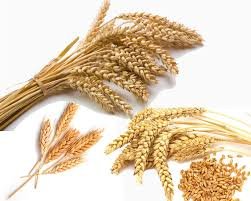
i. Cereals. The staple diet of man in the Bible is bread, which is made either from wheat flour (Mt.13:33; Lk.13:21) or barley flour (Jn.6:9m13; cp. Judg.17:13; 2 Ki.4:42). The latter was the usual ingredient of bread for the poorer people. (For the relative value of wheat and barley, see Rev.6:6). The Messianic Scriptures (New Testament) witness to the primitive method of using corn by plucking the fresh ears (Lev.23:14) and removing the husk by rubbing them in the hands (Dt.23:25; Mt.12:1; Mk.2:23; Lk.6:1). When this was done in another man's field it was accounted by the Rabbis as equivalent to reaping, and therefore forbidden on the sabbath (Mishna, Shabbath, vii.2). Other methods of dealing with the corn are referred to in Matthew 3:12 = Luke 3:17 & 22:31. Special mention should be made of the matzah of unleavaned pastry which alone were permitted in Hebrew households during the days of the Pesach (Passover) festival (Ex.12:19; 13:7, etc; 1 Cor.5:7ff.).
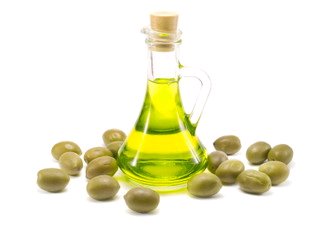
ii. Fruits and Oil. From the garden came grapes (Mt.7:16) and thereby 'the fruit of the vine' (Mt.27:27, etc.) and olives, although the latter (cp. Rom.11:17ff.; Jas.3:12) are never expressly recorded as an article of food. The olive, however, provided the most useful oil which was used in the preparation of food, and the olive berry itself was preserved by a process of pickling it in brine. Pickled olives were eaten with bread as a relish. And, in this connection, mention may be made of the sauce compounded of dates, figs, raisins and vinegar and called haroset which was a feature of the Pesach (Passover) feast (Mk.14:20; Jn.13:26; Mishnah, Pesahim, ii.8; 10:3).

The fruit of the fig-tree is spoken in Matthew 7:16 in the same context as the grape. These two fruits were much praised in Palestine, whereas at the extreme end of the social scale the fruit of pods or the carob-tree provided the frugal 'husks' which the prodigal would have been glad to eat in his plight (Lk.15:16), though they were properly swine-food.
b. Animal Products
i. Animals. The Hebrew world of the Messianic Scriptures (New Testament) saw the Kashrut dietary laws strictlty enforced, especially in regard to the distinction between kosher ('clean') and unkosher ('unclean') animals and birds (Lev.11:1-23; Dt.14:4-20; Acts 10:9ff.; also see the Mishnaic tractate, 'Abodah Zarah) This was true of both the non-Messianic (Jewish) and Messianic (Christian) communities and of the Gentiles who would later convert to the Besorah (Gospel). One of the great errors of nearly all the Christian churches has been the claim that Messiah did away with the Kashrut or dietary food laws of the Tanakh (Old Testament). Many of the articles in this registry expose this lie. Peter's vision is often misunderstood to be the green-light for believers to eat whatever they like when in fact it has nothing to do with food which is used merely as an illustration for different races of people and the eligibility of non-Israelites into the Kingdom in Messiah Yah'shua (Jesus).
Among the clean animals which were eaten as food (provided that they had been slaughtered in the correct fashion and the blood drained away, thereby making them kosher) we may note the kid (Lk.15:29) and the calf (Lk.15:23) which had been specially fattened for a festive occasion.
Click here to see which animals Christians/Messianics are allowed to eat in the New Covenant of Yah'shua the Messiah (Jesus Christ).
Click here to see which animals Christians/Messianics are not allowed to eat in the New Covenant of Yah'shua the Messiah (Jesus Christ).
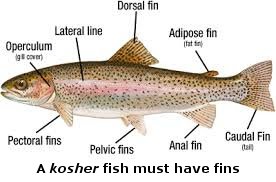
ii. Fish. Fish were similarly classified as kosher ('clean') and unkosher ('unclean') according to the rubric of Yahweh's Torah (Law) (Dt.14:9ff.; cp. Lev.11:9-12). The reader of the Besorah (Gospel) story will be familiar with the names of the Galilean towns which were the centre of the fishing industry on the shores of the lake. The earliest talmidim (disciples) are called 'fishermen' (Mk.1:16ff. and parallels). Apart from the reference in Luke 11:11 there is the well-known mention of fish in the miraculous feedings of the multitude (Mk.6:41ff. and parallels and Mk.8:7ff. and parallels) as well as the meals which the risen Master shared with His own followers (Lk.24:42-43; Jn.21:9ff.).

The popularity of the fish symbol in early Christianity and the use of fish at some observances of the Eucharist in early Christian/ Messianic circles are probably derived from these gospel incidents. This early symbol is not to be confused with the satanic carriacture that is the blasphemous pagan fish-god symbol (consisting of two intersecting arcs -  ) - commonly used today - which, as a stylisation of the female reproductive organ, is a representation of the Philistine god Dagon, in whose temple the ark of the covenant was placed after its capture (1 Sam.5:2). ) - commonly used today - which, as a stylisation of the female reproductive organ, is a representation of the Philistine god Dagon, in whose temple the ark of the covenant was placed after its capture (1 Sam.5:2).
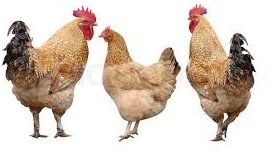
iii. Birds. Birds as items of food are not mentioned in the Messianic Scriptures (New Testament), apart from the general mention in Acts 10:12 and the implication of the sale of sparrows (Mt.10:29; Lk.12:6) but their eggs are alluded to in the Master's teaching in Luke 11:12.
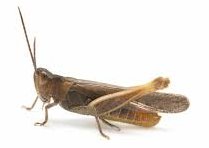
iv. Insects. Edible insects include the locust, which along with wild honey, formed the diet of John the Baptist in the Judean wilderness (Mt.3:4; Mk.1:6).
c. Seasoning
To increase the pleasure of eating, various condiments were employed. The chief of these was salt, which has the property of adding savour to a dish of food (Job 6:6). This fact is made a central feature of some ethical instruction in the Gospels (Mt.5:13; Mk.9:50; Lk.14:34) and Epistles (Col.4:6). Mint, dill, cummin and rue (conflating Mt.23:23 and Lk.11:42 which adds 'every herb') continue the list of spices and herbs used for flavouring, and in Matthew 13:31ff. there is a reference to the mustard plant, the leaves of which were cut up and used to give extra flavour. The tiny mustard seed must be sown in the field, according to Hebrew practice, and not in the garden, and in Palestine the plant reached a height of 8-10 feet.
C. CONCLUSION
The importance of the correct kind of food both for health and spiritual reasons is therefore heavily underscored in the Bible. Of course, today there are new issues that health-conscious believers must deal with, namely processed ('refined') foods (e.g. bread made with refined flour) and genetically modified foods (GMO's) which are known to be harmful and in some cases deadly, even those of the kosher ('clean') variety. When we speak, therefore, of kosher food, we must of necessity exclude these. True organic food, free of additives, industrial 'refinement' process and genetic modification, is really the only kind of safe, healthy food in our industrialised society. In these concluding years of the age, believers must learn to grow and produce their own food, as of old.
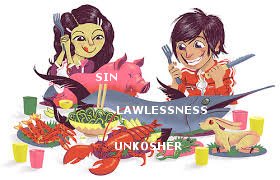
Yahweh's Kashrut law has never changed and those who ignore it are rightly reckoned as lawlessness (2 Pet.3:17) - they are in a state of rebellion. It is a part of the Christian/Messianic Israelite lifestyle in perpetuity. To respect our physical bodies as the temple of the Ruach haQodesh (Holy Spirit) by eating only kosher ('clean') food honours both the Creator as well as the human life He created for His purposes, equipping and enabling His servants to live their lives optimally and with the greatest possible spiritual sensitivity for discerning Yahweh's will. Our bodies are not our own to do with as we please:
"Do you not know that your body is a temple of the Ruach haQodesh (Holy Spirit), who is in you, whom you have received from Elohim (God)? You (your whole being, body and spirit) are not your own; you were bought at a price (by Yah'shua/Jesus on the cross). Therefore honour Elohim (God) with your body" (1 Cor.6:19-20, NIV).
Therefore honour Him by eating and drinking right. If you are not eating the biblical way, you are invited to examine the articles in this register and make a lifestyle change. Blessings always follow obedience to Yahweh's emet (truth).
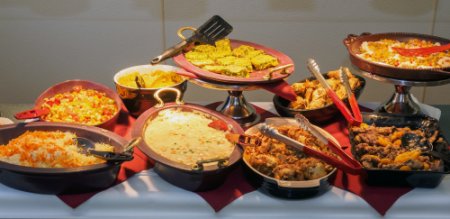
|


